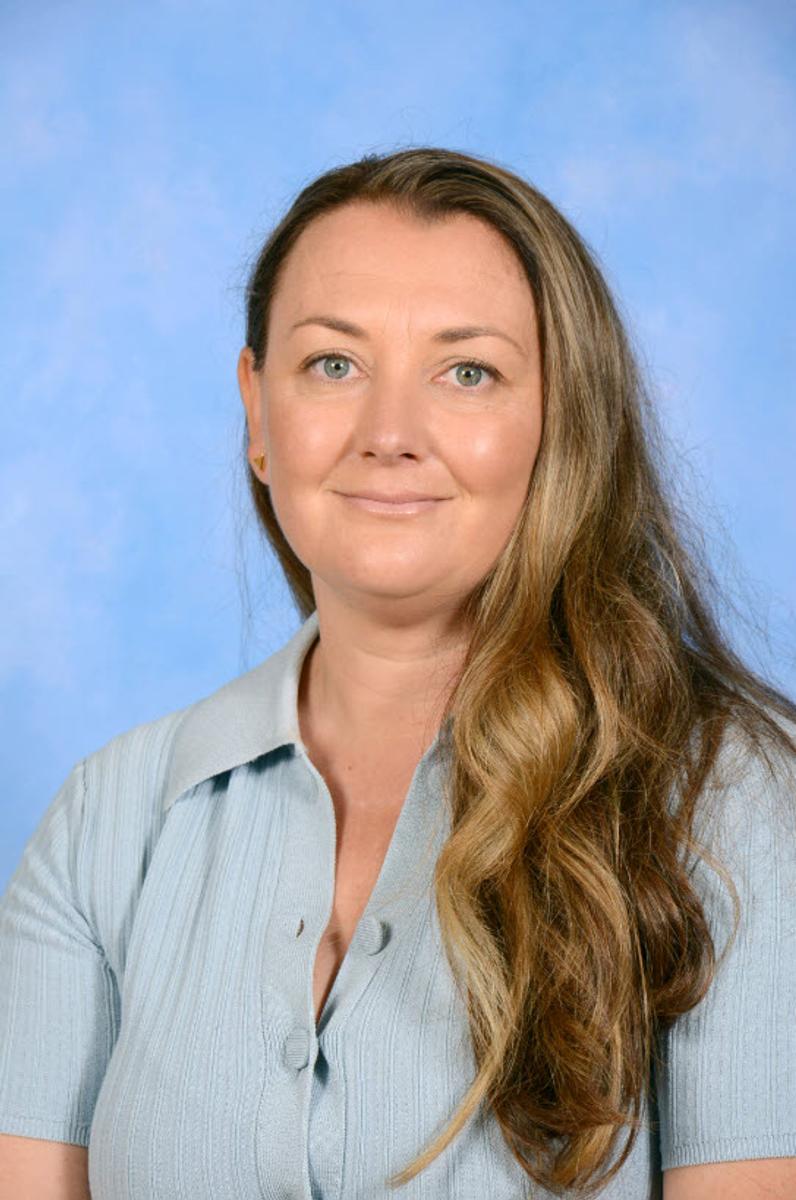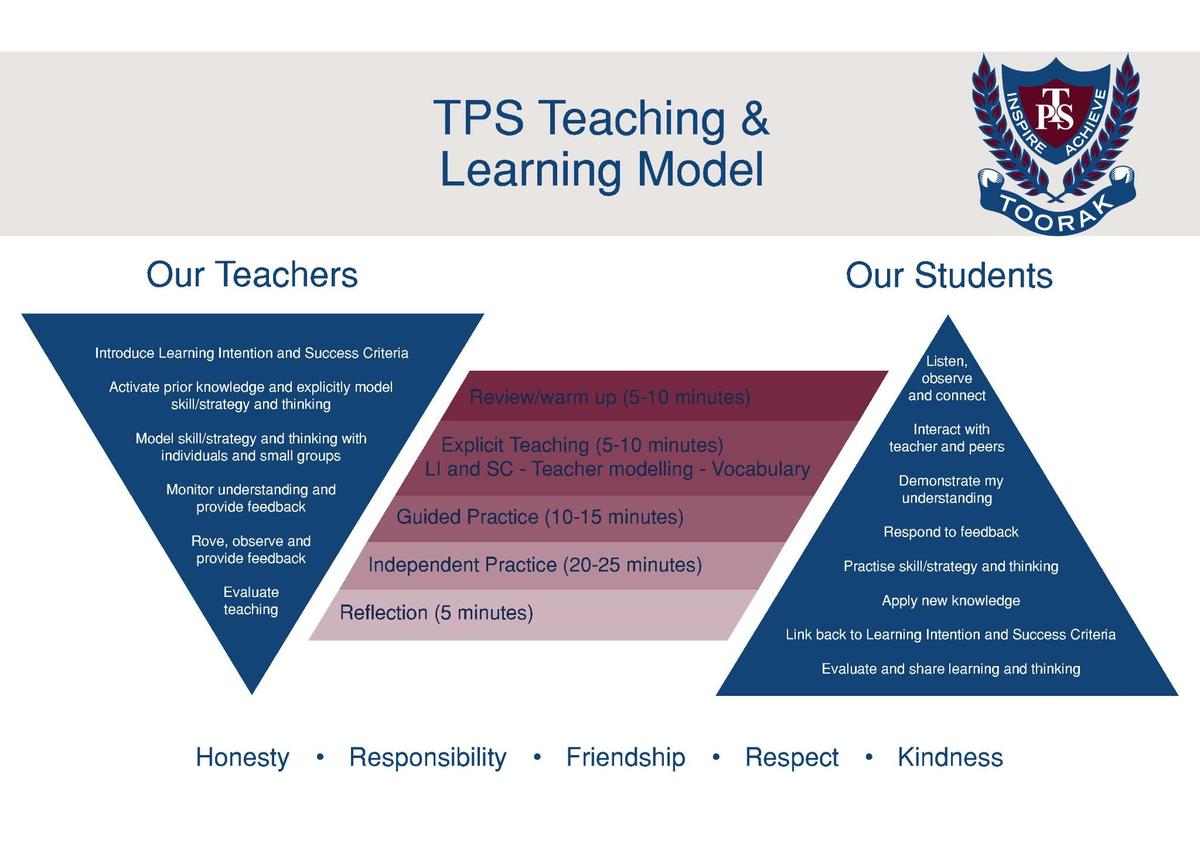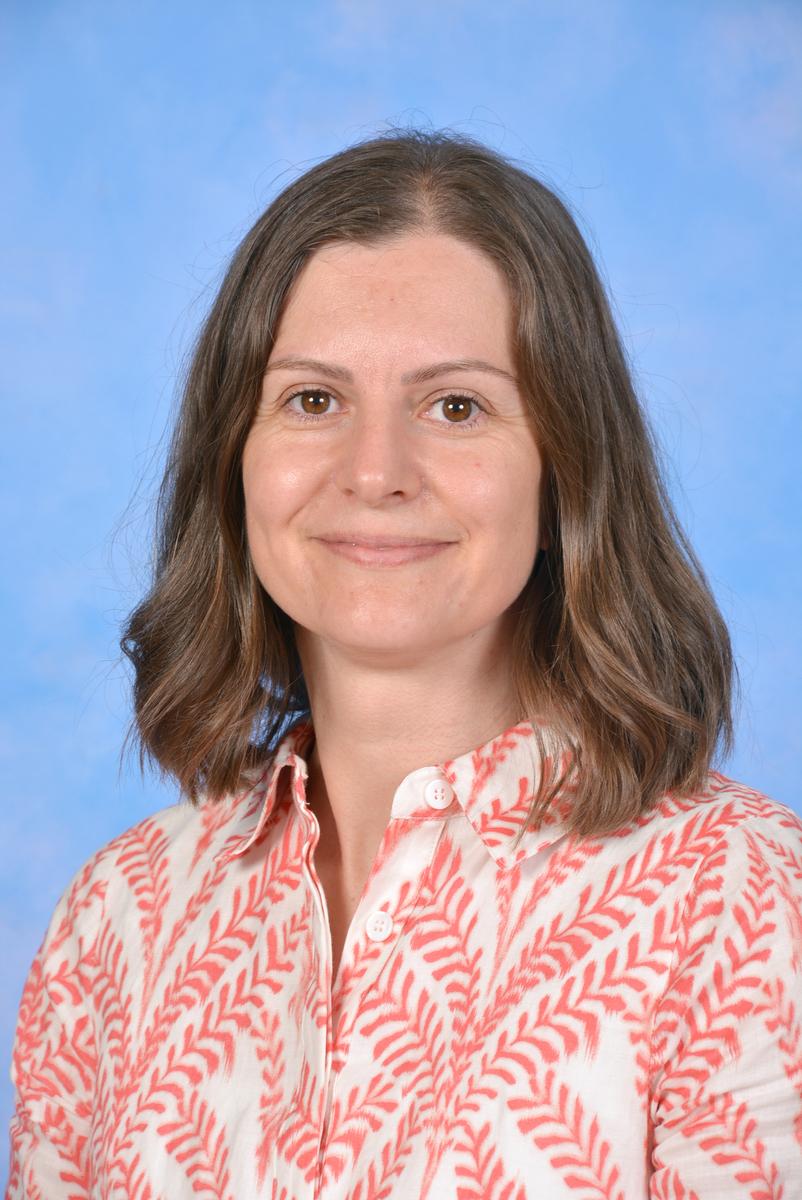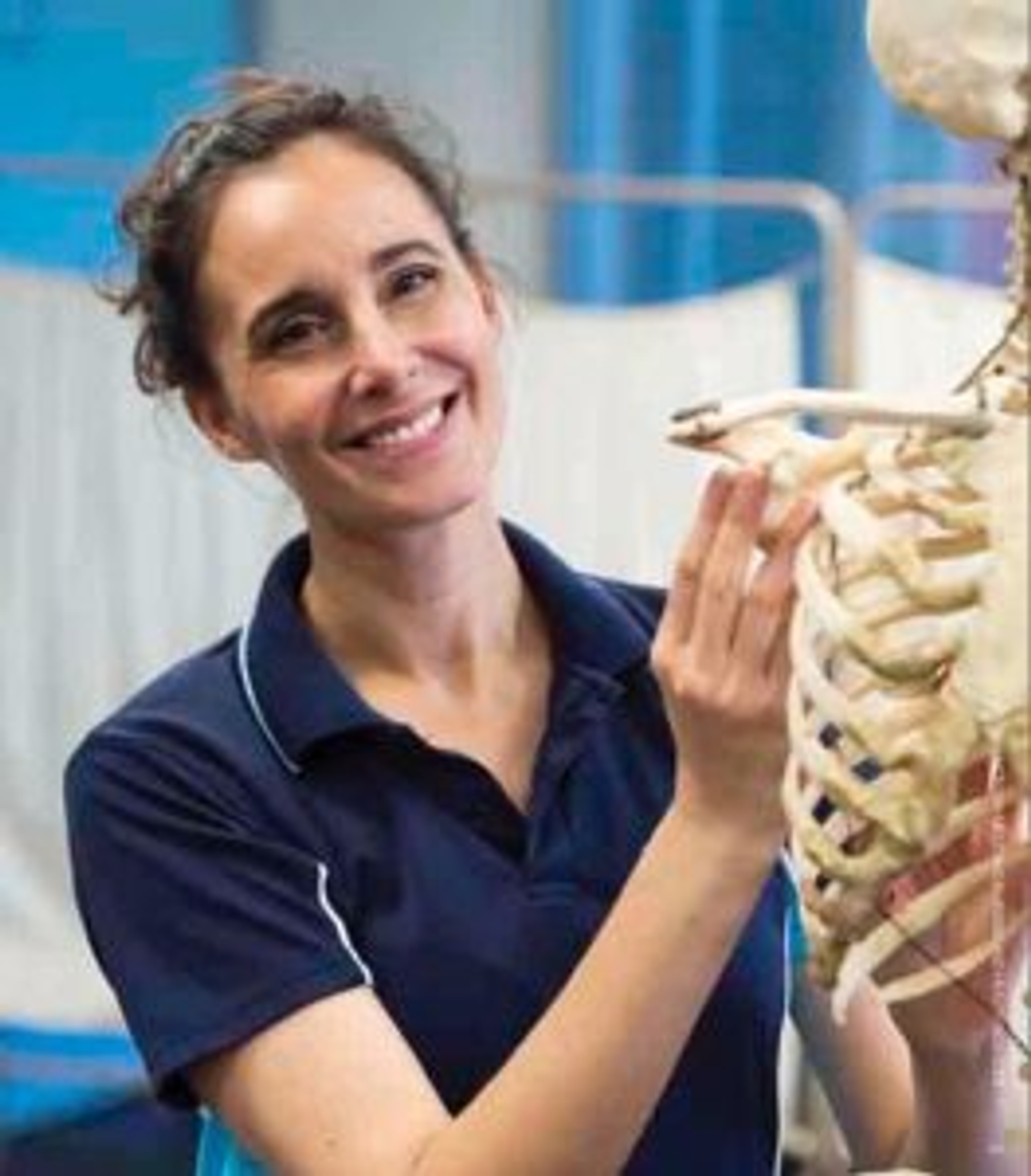Assistant Principal's Message
Curriculum News
Over the summer break the leadership team worked behind the scenes to refine our ‘start up program’ that is used to guide teaching and learning practices for all classes across all key learning areas. The program aims at establishing instructional routines based on evidence and aligns with the TPS Teaching and Learning Model. Our lessons are underpinned by an understanding of Cognitive Load Theory and the practical implementations this has on instruction. "Cognitive load" relates to the amount of information that working memory can hold at one time. Cognitive Load Theory is supported by a robust evidence base which shows that students learn best when they are given explicit instruction accompanied by lots of practice and feedback. Researchers have identified a number of strategies that can help teachers to maximise student learning.
These strategies work by optimising the load on students’ working memories;
Strategy 1: Tailor lessons according to students’ existing knowledge and skill.
Strategy 2: Use worked examples to teach students new content or skills.
Strategy 3: Gradually increase independent problem-solving as students become more proficient. Strategy 4: Cut out inessential information.
Strategy 5: Present all the essential information together.
Strategy 6: Simplify complex information by presenting it both orally and visually.
Strategy 7: Encourage students to visualise concepts and procedures that they have learnt.
Please read below to find out a little more about each stage during the lesson
| Lesson Element | Role of the Teacher | Role of the student |
| Review/Warm Up | Lead a daily Review; a fast paced review of previously learned material so students’ knowledge is transferred from their short term to long term memory; resulting in automatic recall. | Participate and respond to review questions, orally or on mini-whiteboards |
| Explicit Teaching (Teacher Models) | The teacher introduces the learning intention and the success criteria The teacher models completing the task using the exact steps given to the students. While completing this, the teacher narrates their thinking.
| Listen, observe and connect Explain back to the teacher what has been shown to them. Students engaged in turn and talk to restate and clarify their understanding |
| Guided Practice | The teacher moves through multiple examples, they gradually release the responsibility of completing the task/ applying the concept. The teacher checks for understanding and participation at this stage of the lesson by listening and observing student work on mini-whiteboards. The teacher undertakes questioning throughout, to determine whether students are capable of moving onto independent practice
| Students start by solving the task step by step at the same time as the teacher
Students may use mini whiteboards throughout to demonstrate their learning Interact with peers and teacher |
| Independent Practice | The teacher observes, responds to questions, conducts a small teaching group, and checks after completion. | Demonstrate understanding by completing task Responding to feedback Practising skill/strategy Applying new knowledge |
| Reflection | At the end of a learning sequence, the teacher checks that the students have applied the concept and skill from the learning intention. | Evaluate and share their learning that directly links to the Learning Intention and Success Criteria |
Suada Dzaferovic
Assistant Principal
Wellbeing and Inclusion
My name is Leila Sheehan and I have the privilege of working alongside the leadership team as the acting assistant principal this term. My area of focus is wellbeing and inclusion and I look forward to working alongside our staff and students.
Our staff and students have commenced the year by reviewing the school values of honesty, kindness, friendship, respect and responsibility, during Wellbeing lessons. These values serve as the foundation for creating a positive and productive learning environment.
Our school is a part of the school-wide positive behaviour support (SWPBS) framework. SWPBS aims to assist schools to improve social, emotional, behavioural, and academic outcomes for students. During Wellbeing lessons, students have been learning about the student behaviour matrix which outlines behavioural expectations across 8 areas within the school. Please click here to view a copy of the matrix. This week’s matrix focus has been on respect- look after myself and my classmates, actively listening to others and using my manners. We encourage you to have conversations with your family about this.
We welcome Sasha Wakelin (Occupational Therapist) to our school. Sasha joins us every Wednesday. Jo Gimas (Speech Pathologist) continues to work with us every Tuesday and Wednesday. We are committed to creating a positive and inclusive learning environment and Sasha and Jo’s expertise certainly contributes to this.
We look forward to a successful school year and thank you for your support.
Leila Sheehan
Acting Assistant Principal




